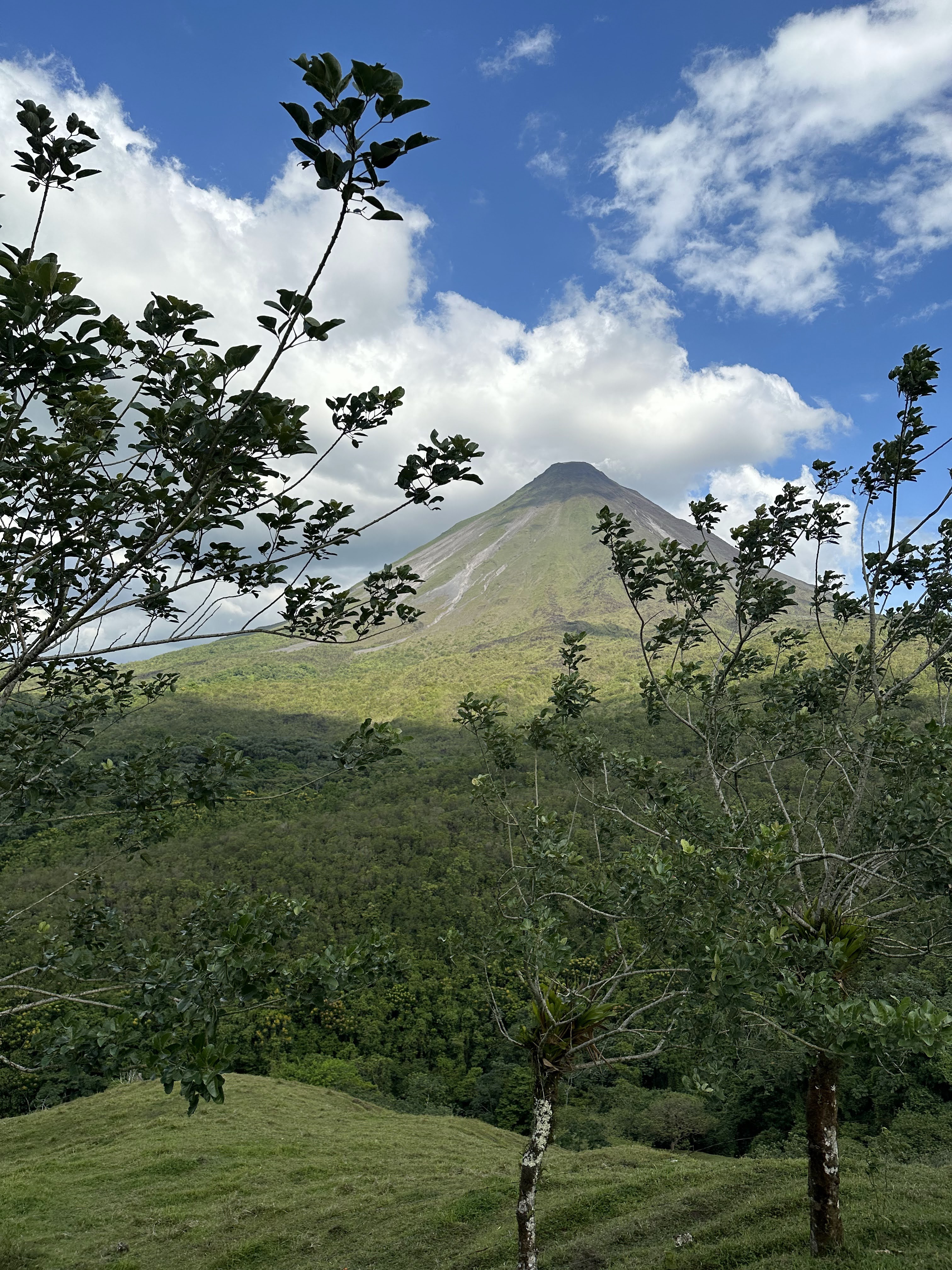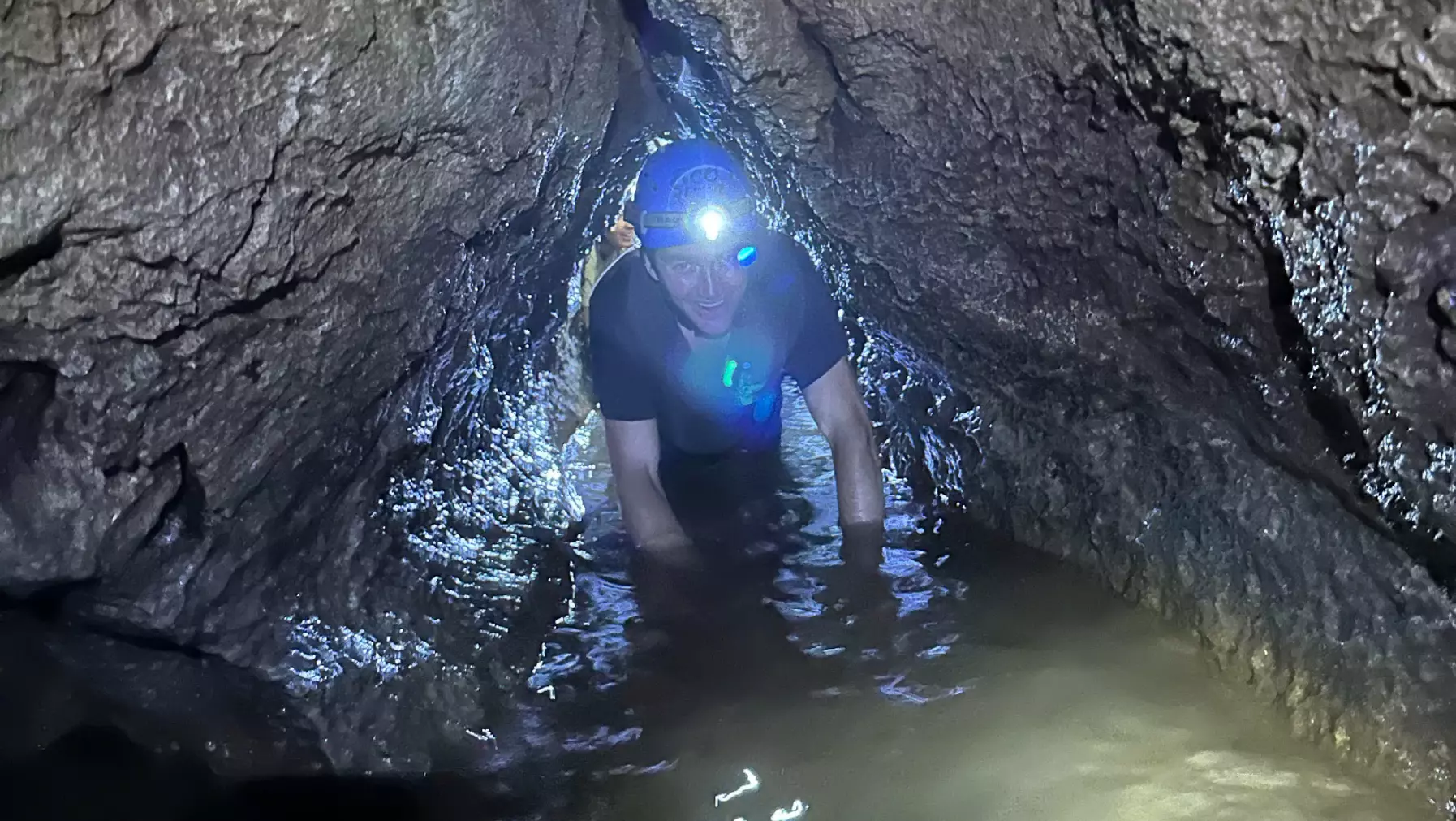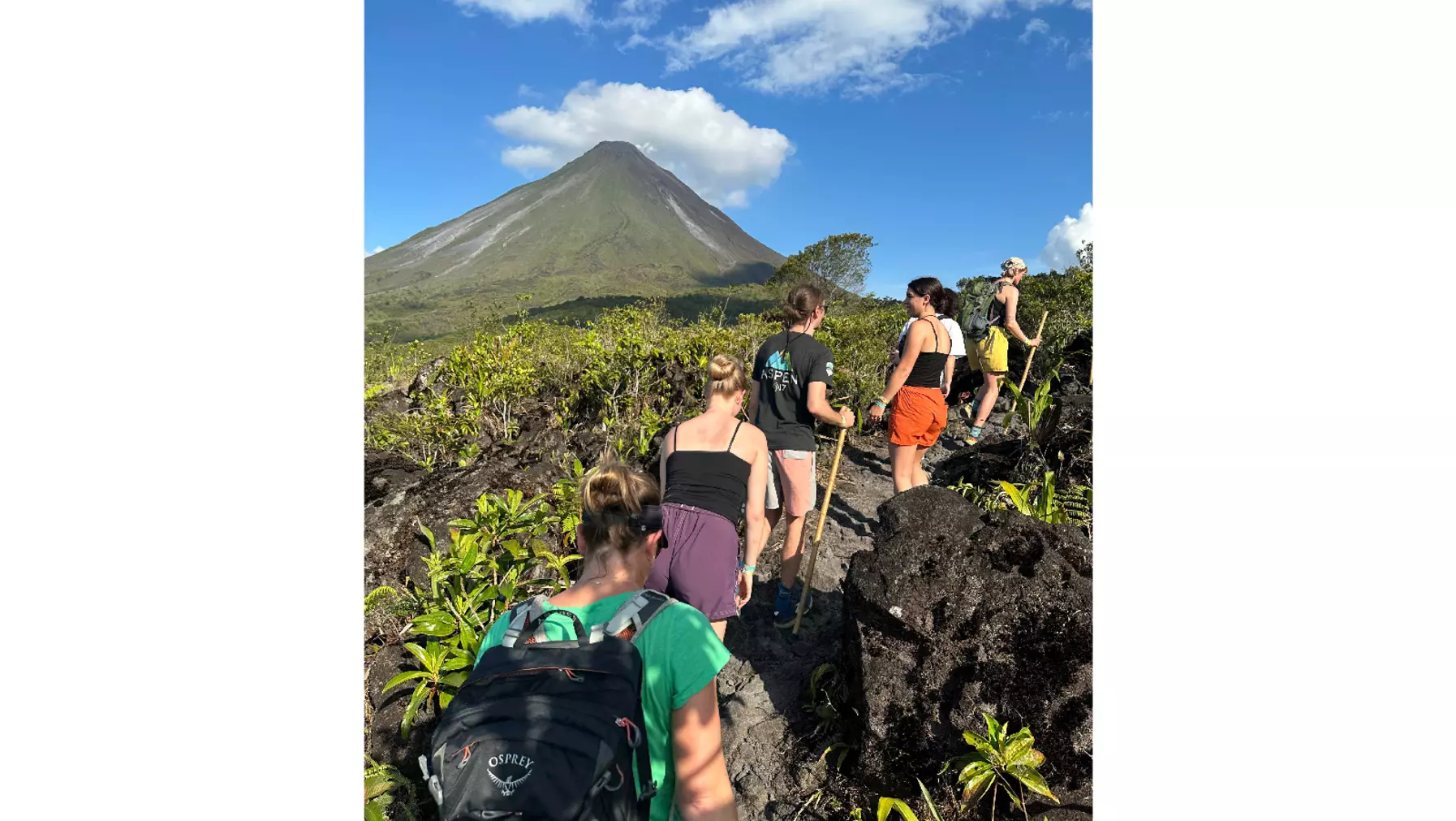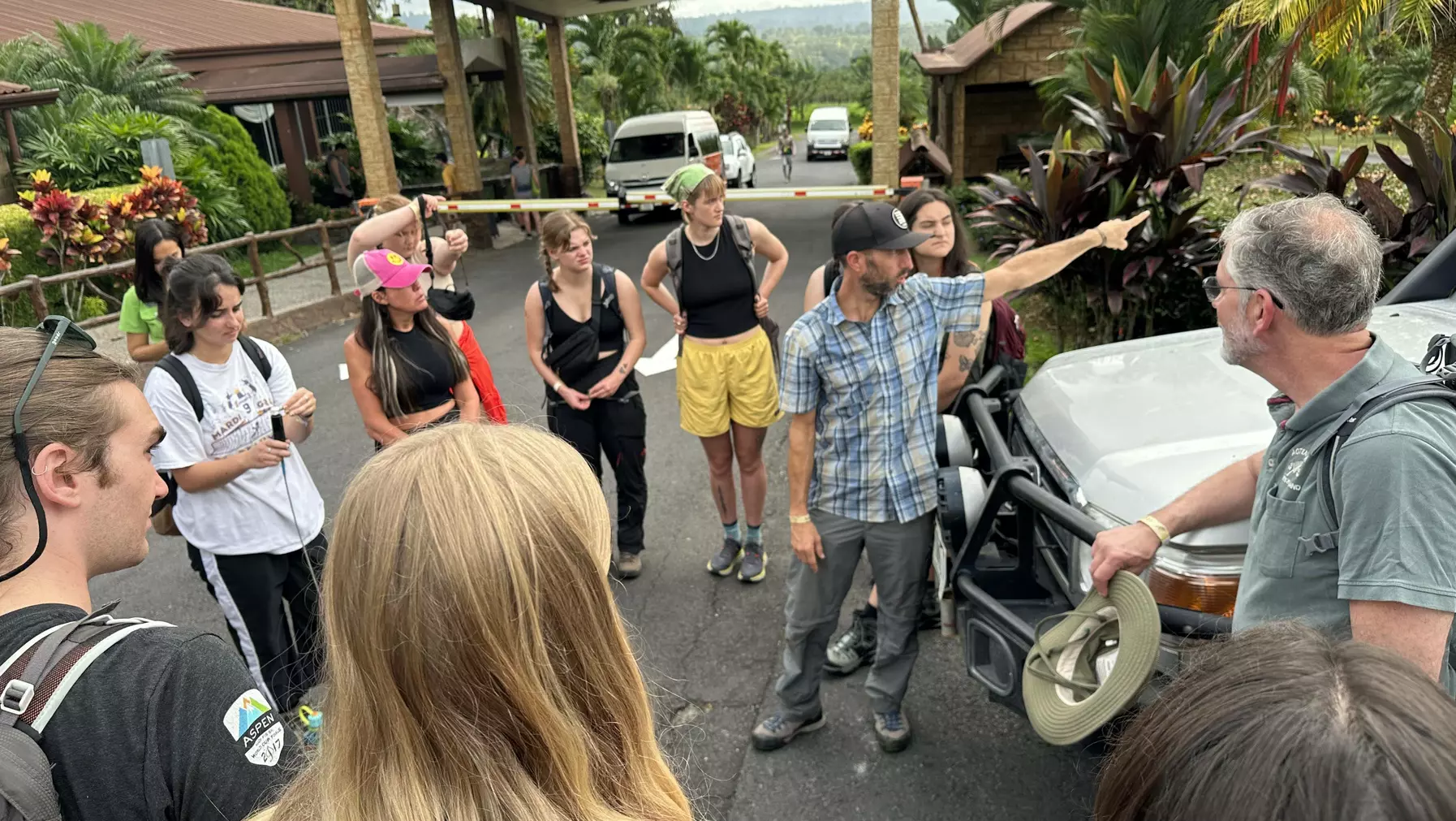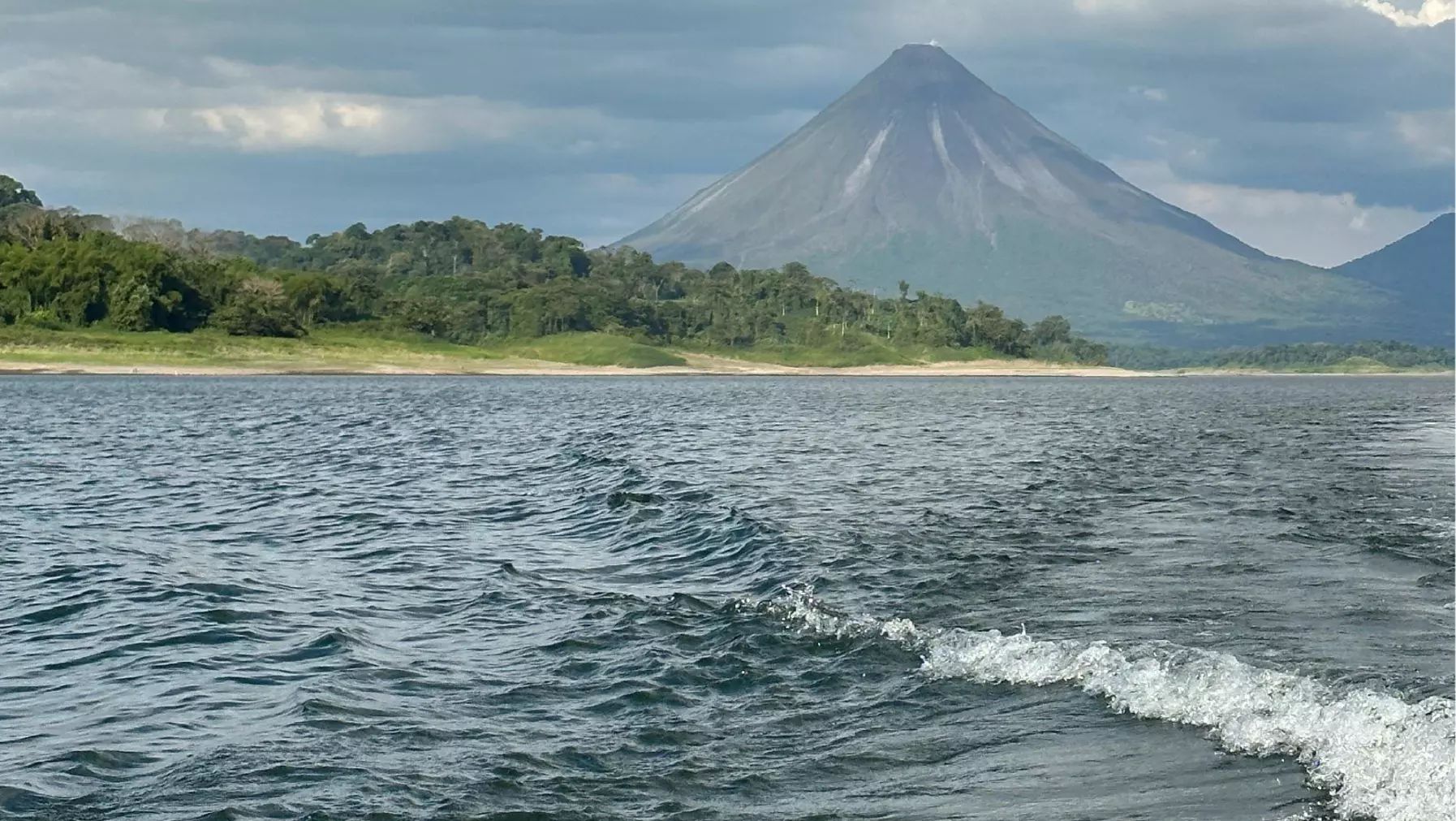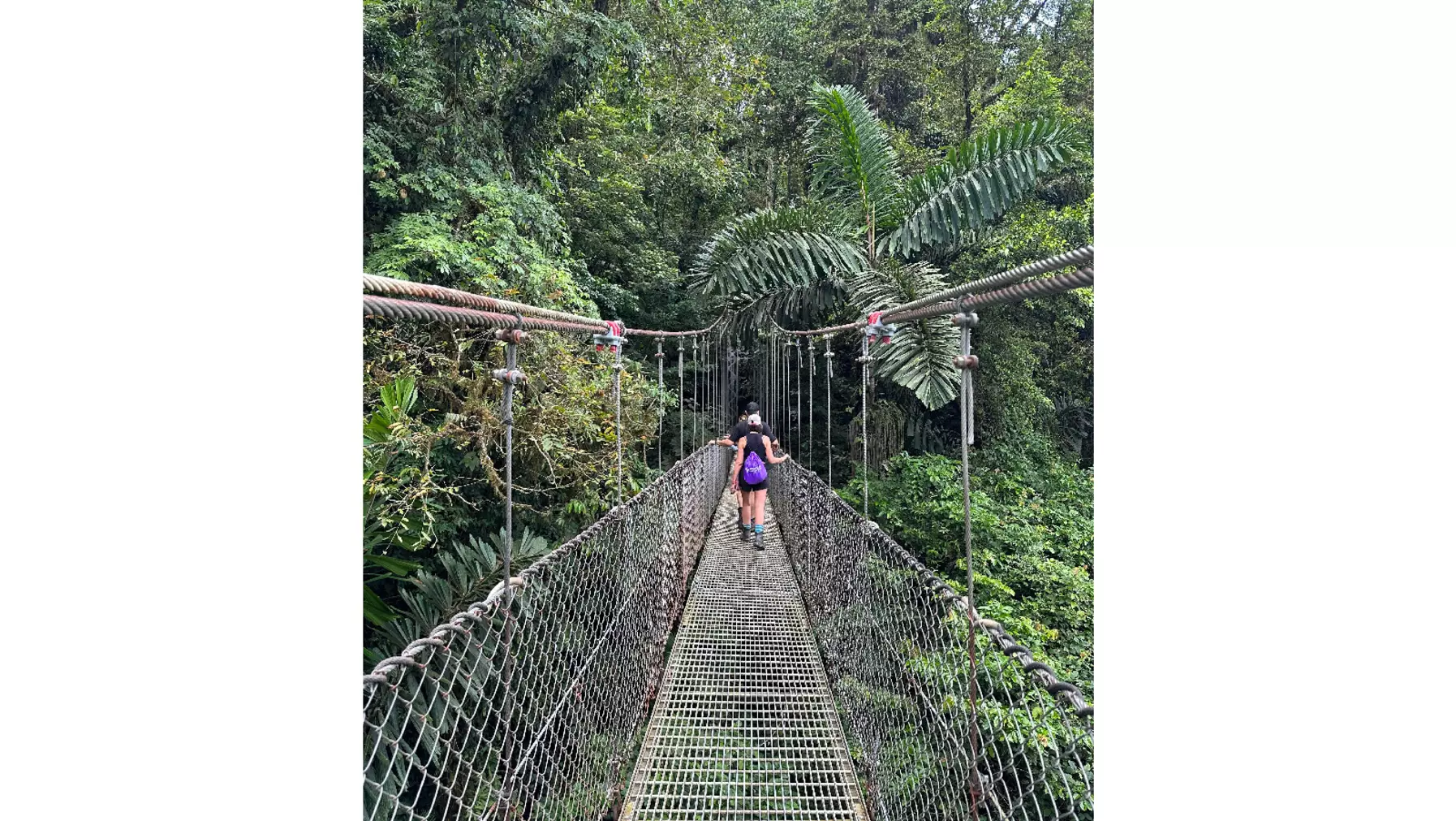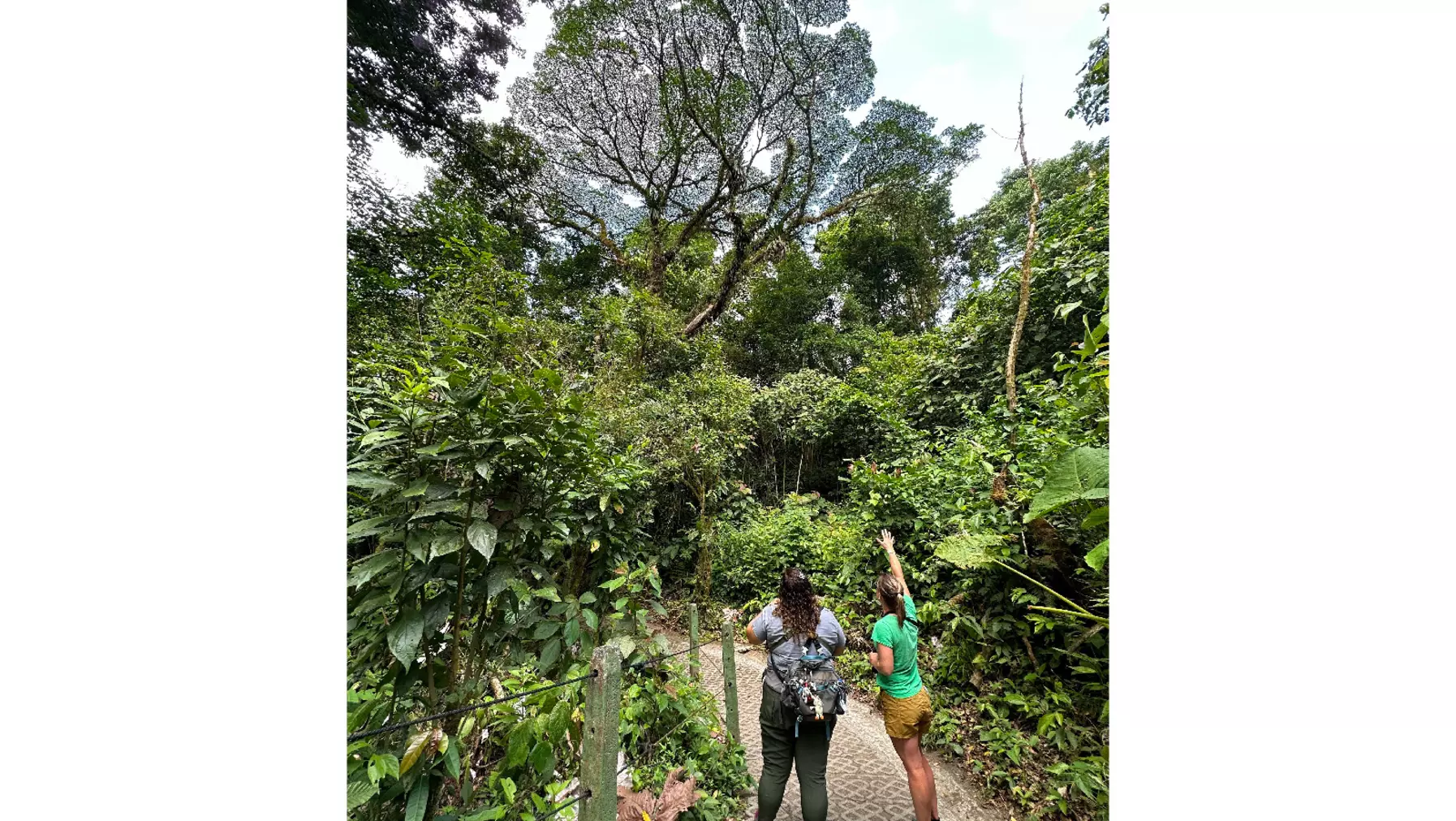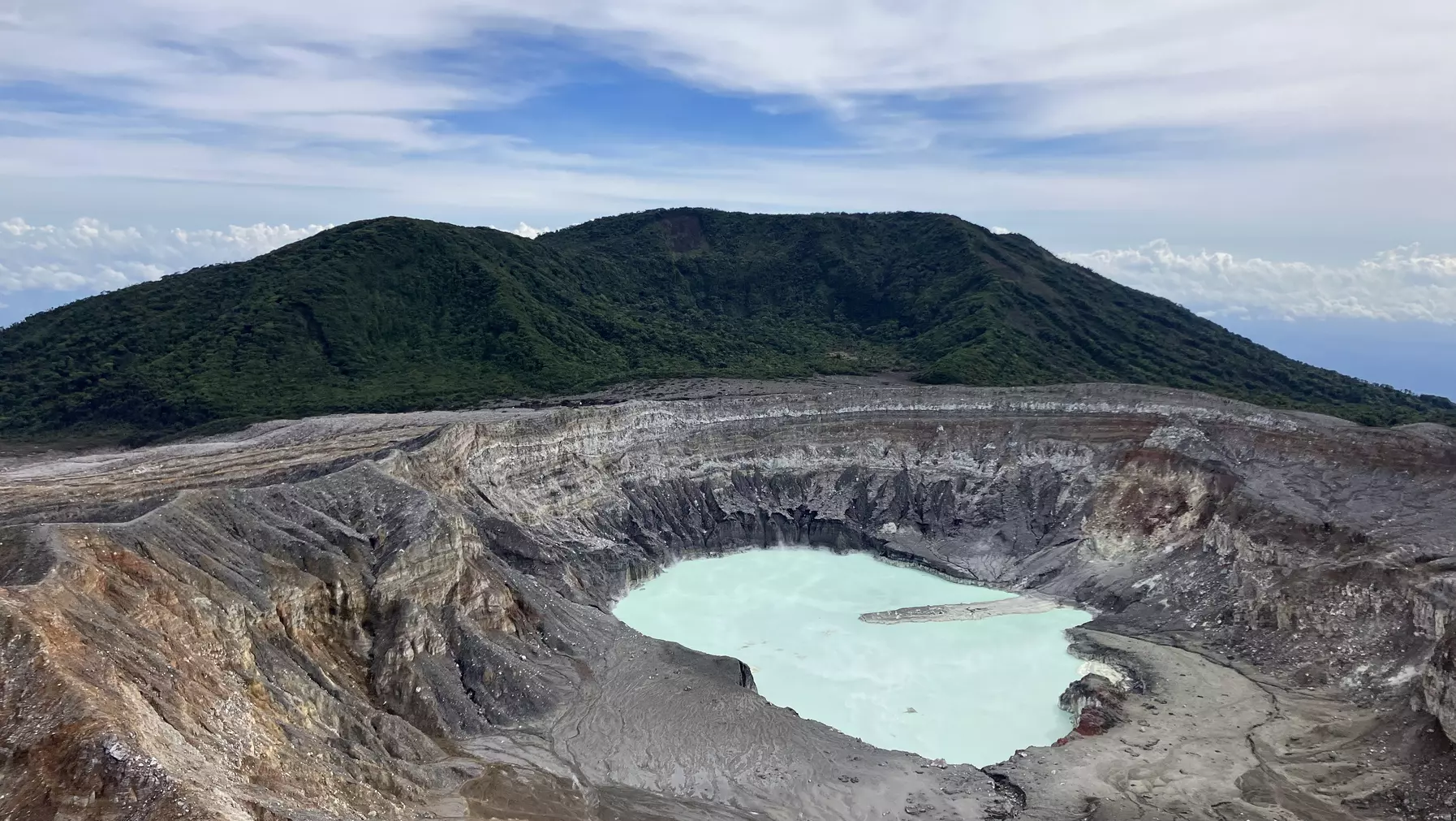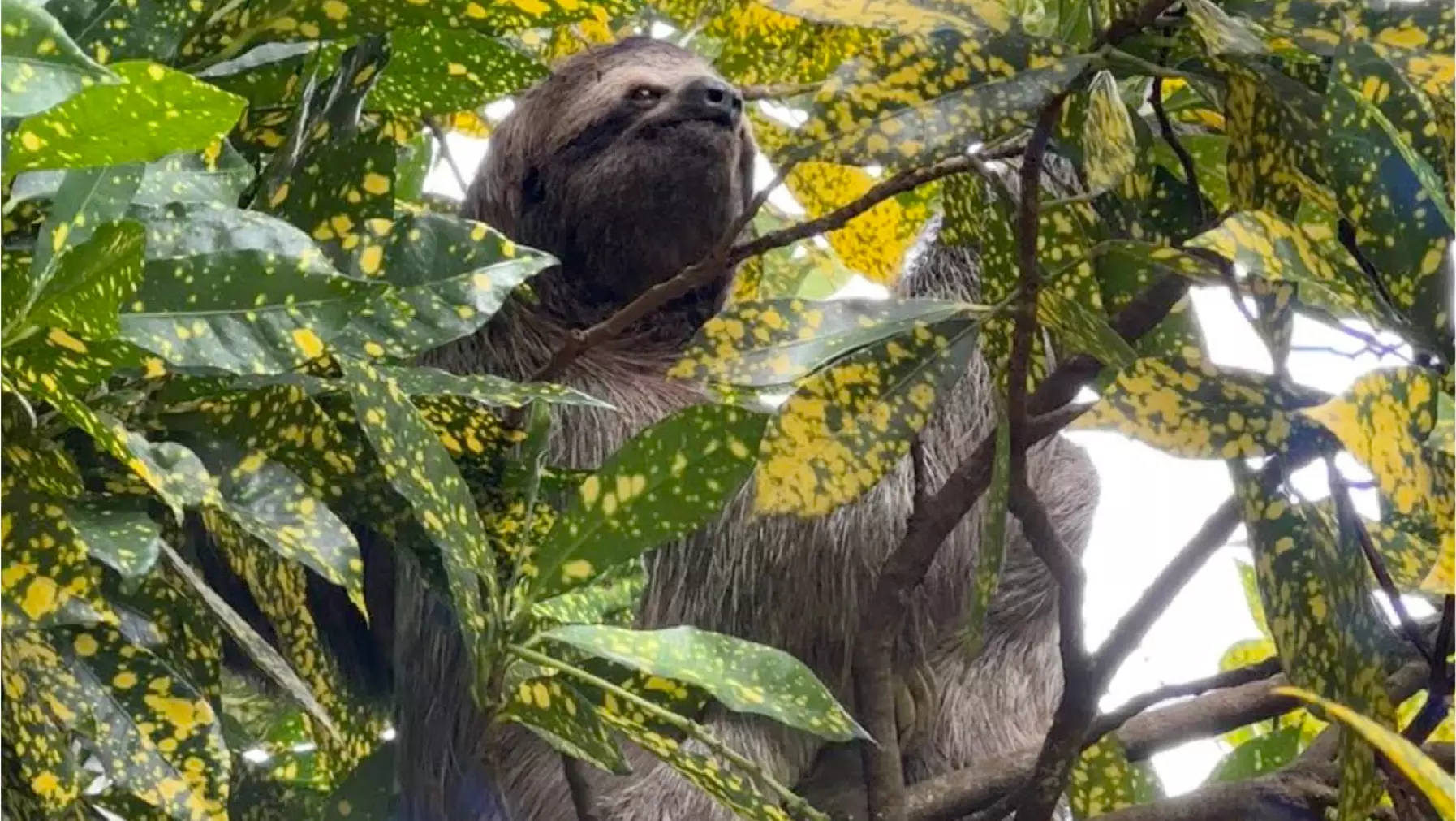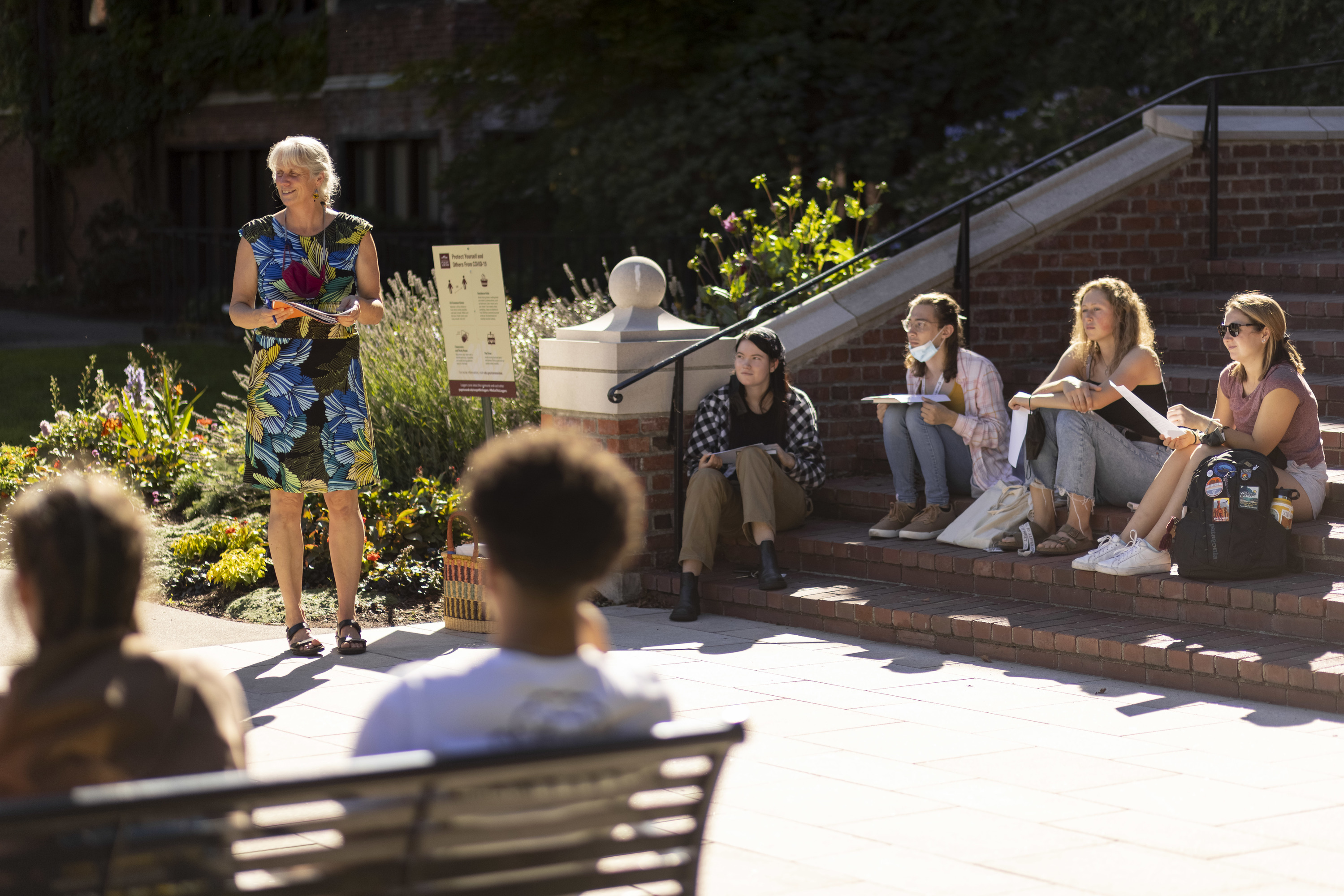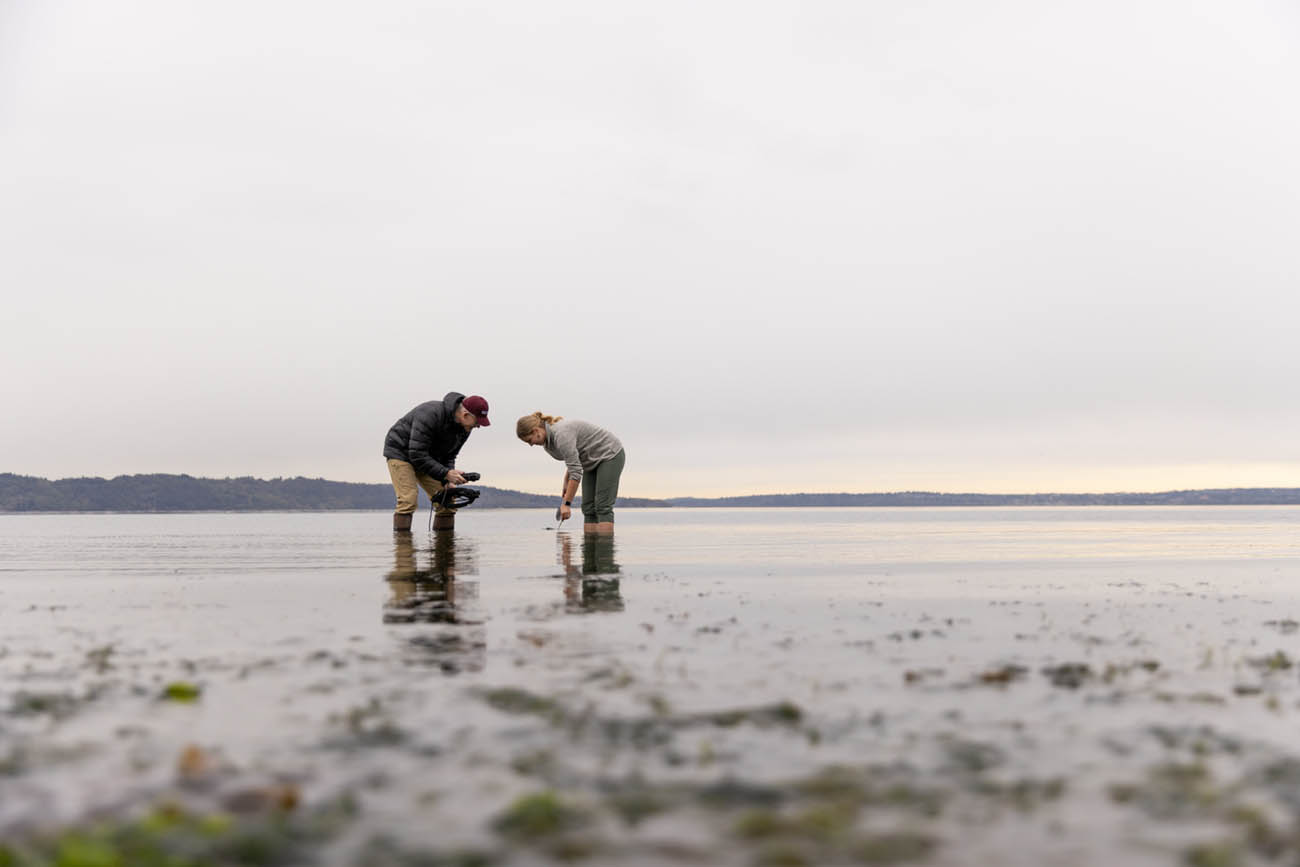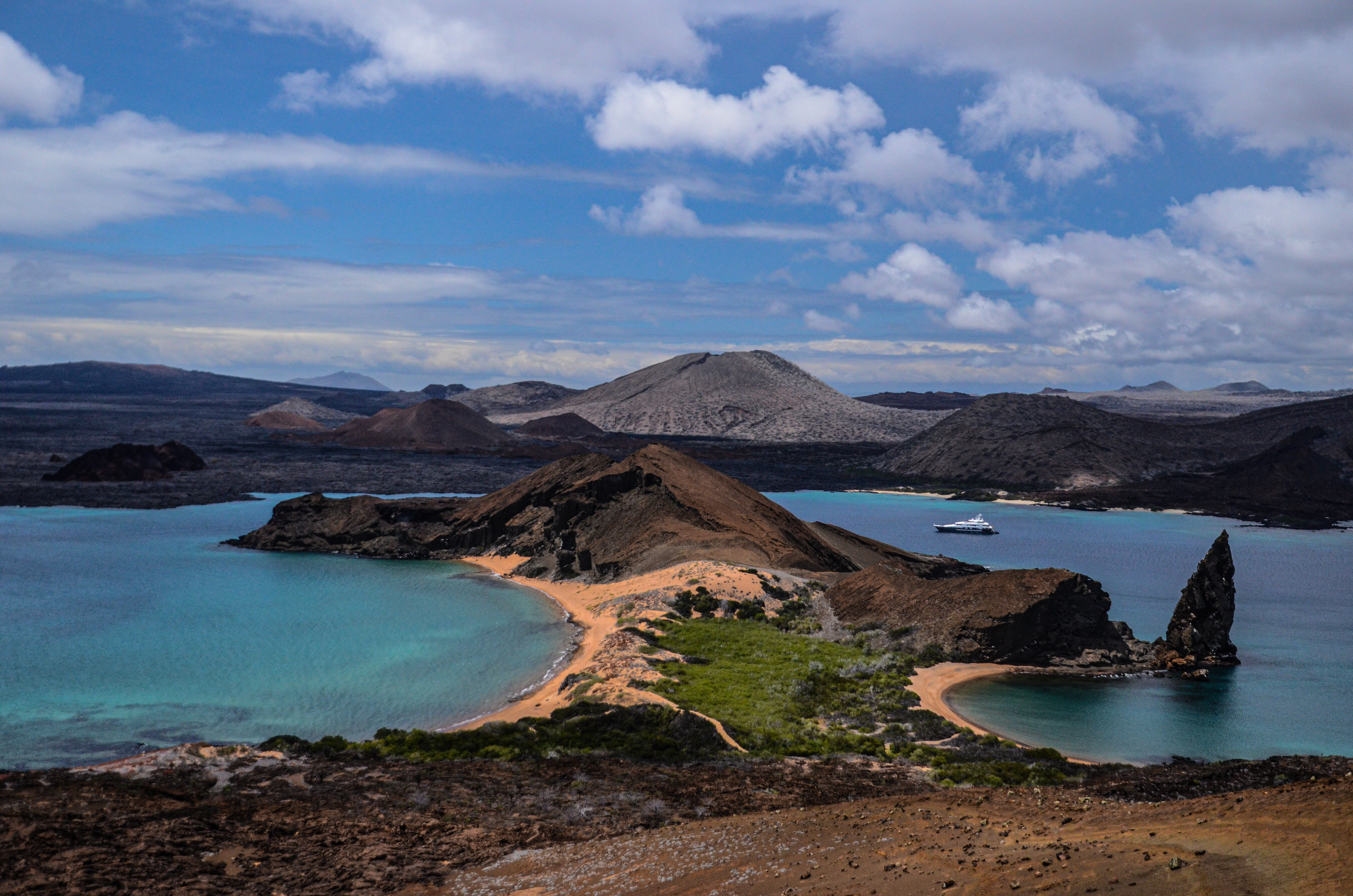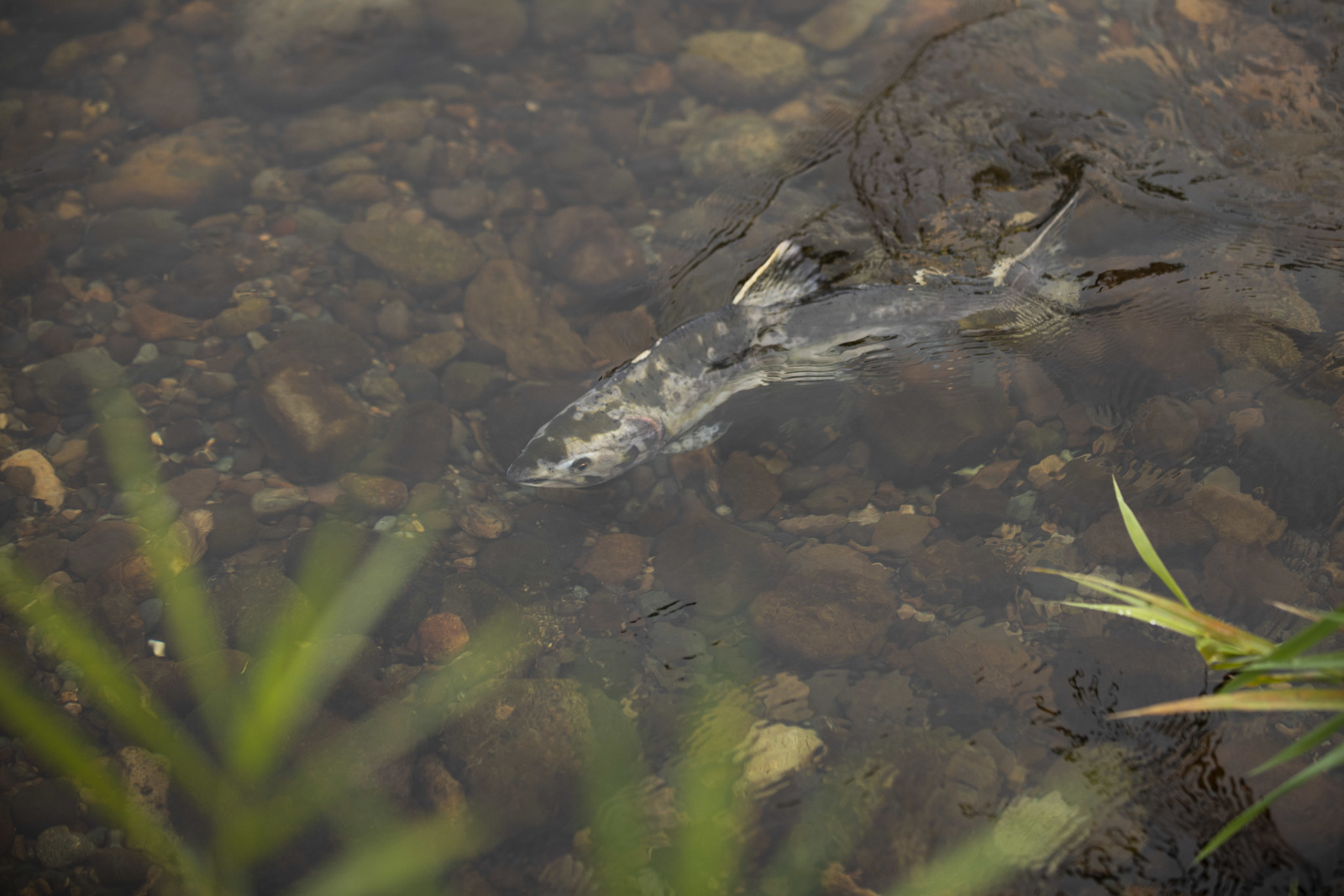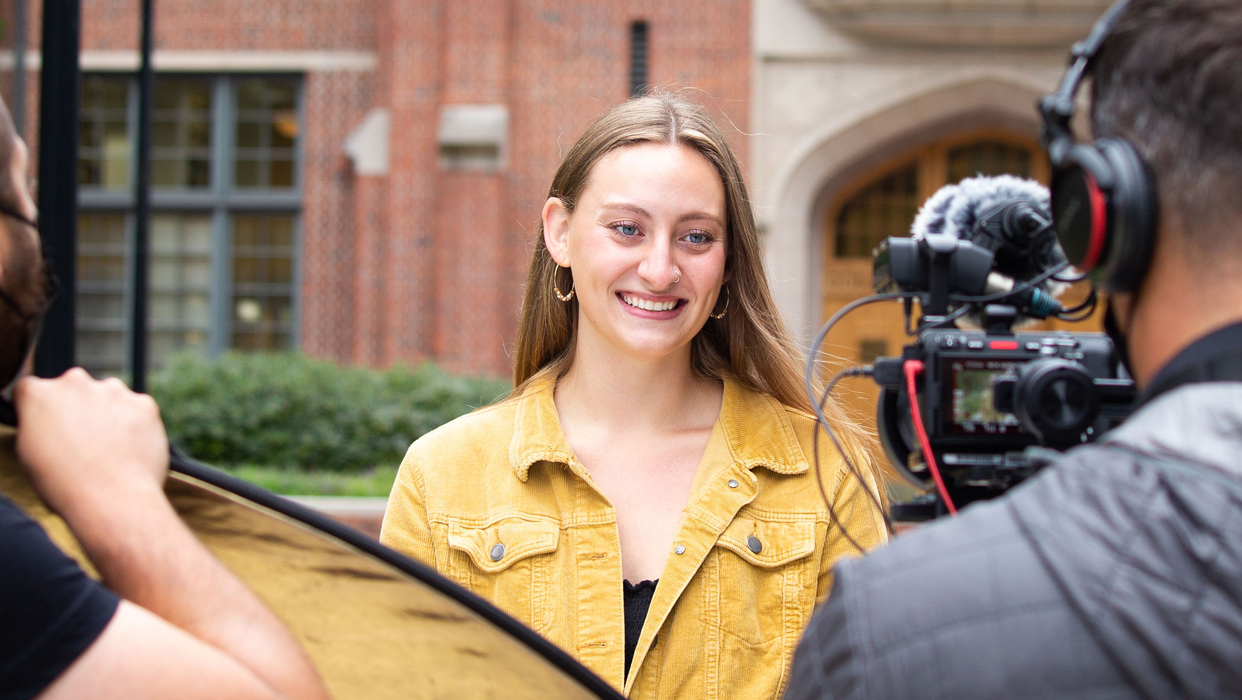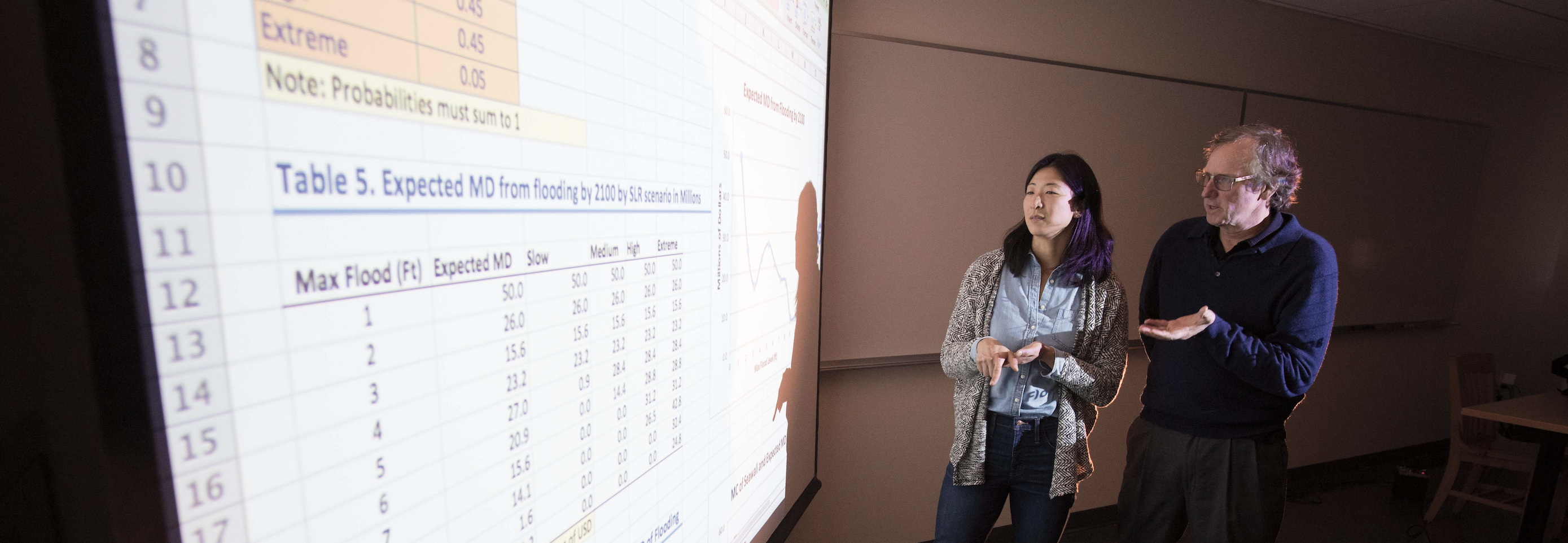Opportunity erupts for Loggers studying the volcanoes and caves of Costa Rica.
Once every two years, a small group of Puget Sound students studying geology spend one to two weeks immersed in rigorous experiential learning on trips known as Georneys—pronounced “journeys” with a nod to the geological sciences. On these trips, students get to do hands-on science, learn from experts, and experience some of the most stunning geology on the planet. Since 2007, students have visited Ecuador, Hawai`i, Iceland, New Zealand, and Tanzania.
Dr. Anne Fetrow ’15 was on the trip to Tanzania as a third-year majoring in geology with a minor in environmental policy & decision making. This year, Fetrow, now a National Sciences Foundation postdoctoral fellow at the University of Michigan, was invited to join Professor Kena Fox-Dobbs, Professor Emeritus Jeff Tepper, and 13 current students in Costa Rica to share her expertise as a sedimentologist.
The Georneys team began their adventure in La Fortuna, an ecotourism-centric town at the foot of the Arenal Volcano. They spoke with scientists monitoring the volcano and learned about the area’s cultural and natural history.
“Arenal is a perfect cone with a little bit of steam coming out of it. If you were going to draw a volcano, this is what it would look like,” says Fetrow. Thanks to a subduction zone off the west coast of Costa Rica, the country boasts a chain of active volcanoes similar to the Cascade Range in the Pacific Northwest.
